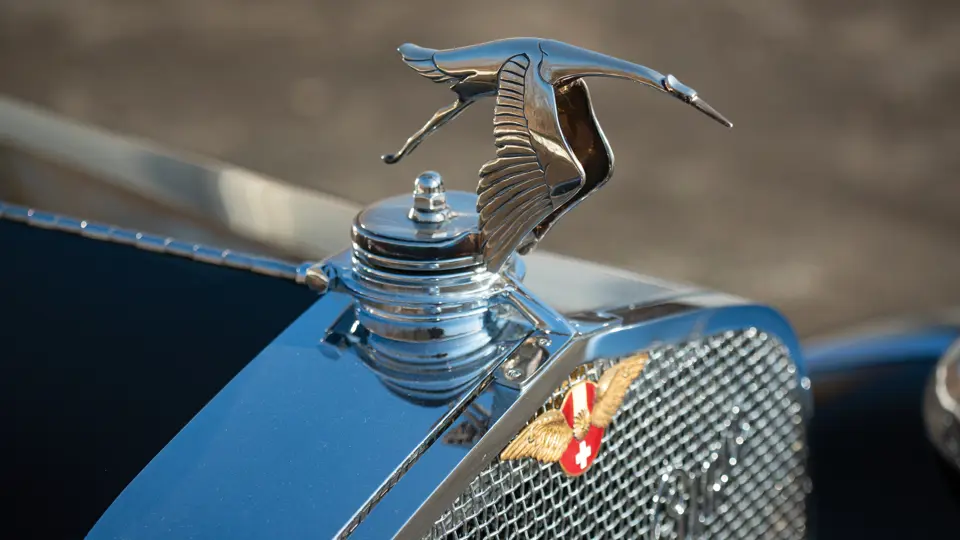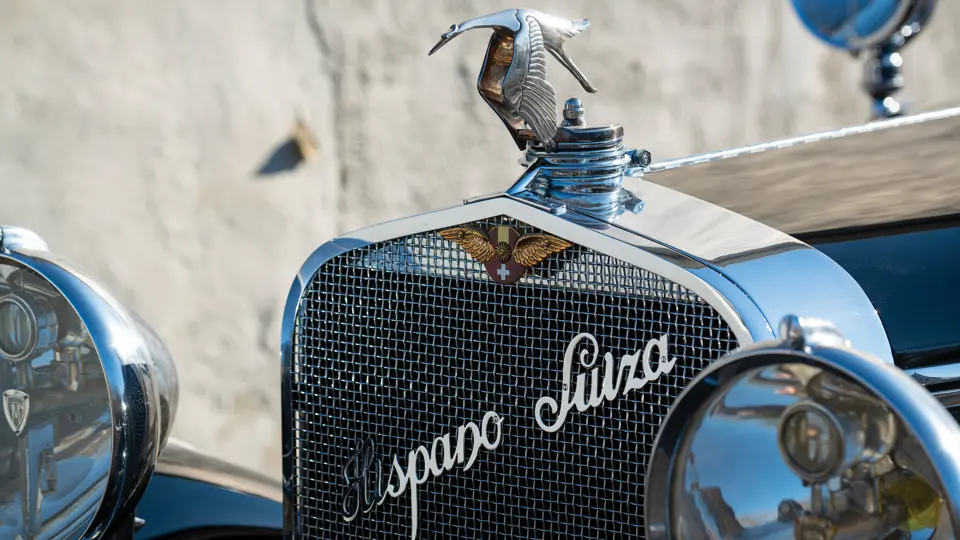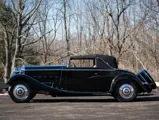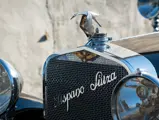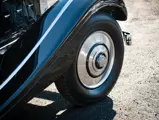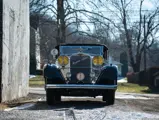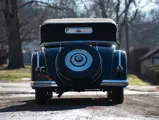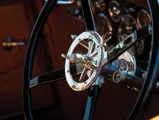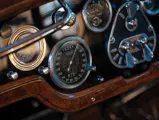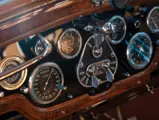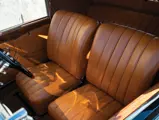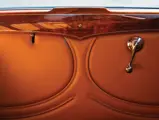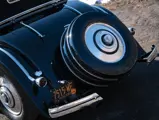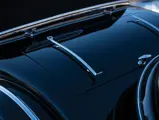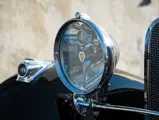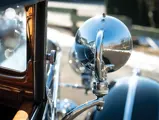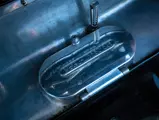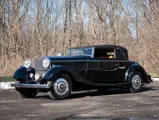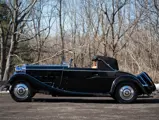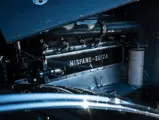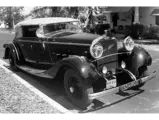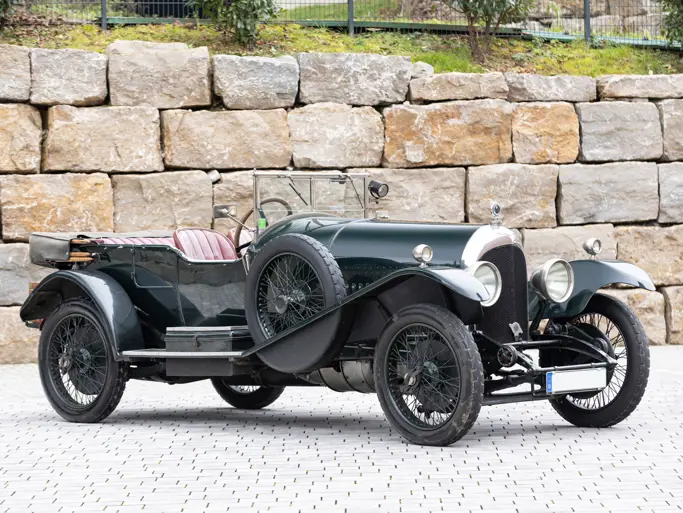
1926 Hispano-Suiza H6B Cabriolet Le Dandy by Chapron
{{lr.item.text}}
$1,352,500 USD | Sold
{{bidding.lot.reserveStatusFormatted}}
- The so-called “Postman’s Hispano”
- Exclusive Cabriolet Le Dandy coachwork by Henri Chapron
- Superbly elegant expression of the coachbuilder’s art
- Award-winning restoration by Steve Babinsky
- Classic example of a luxurious continental touring automobile
The new and technically advanced Hispano-Suiza H6 was introduced in 1919. Ample power was delivered by the 6,597-cc, overhead-camshaft six designed by Marc Birkigt, derived from one half of a proposed V-12 aero engine. The engine itself was built in unit with the three-speed gearbox and featured a pressure-lubricated crankshaft with seven main bearings and aluminum-alloy pistons in steel-sleeved cylinders screwed into the light-alloy block. A substantial 135 hp was available at 2,500 rpm, and the virtually flat torque curve ensured that walking-pace to 85 mph could be accomplished in top gear alone.
The model was the sensation of the Paris Auto Salon. The chassis was light, rigid, and very modern due to a four-wheel braking system that provided stopping power to match the advanced engine and drivetrain. Overall, the H6 offered a level of performance, handling, flexibility, and reliability that in a single-stroke, elevated Hispano-Suiza to become a full-fledged competitor of the finest marques: Isotta-Fraschini, Packard, Bentley, and Rolls-Royce. It was no coincidence that King Alfonso of Spain was an early and avid Hispano customer.
Soon, the finest coachbuilders in Europe were busy creating luxurious and dashing bodies on the big Hispano chassis as royalty, those of great means, and the merely wealthy flocked to own one of these magnificent automobiles. The H6 was revised and improved in 1921 and became the H6B, which would remain in production until 1933, the final models consisting of the bored-out H6C with an engine capacity of 7,982-cc that had been introduced in 1924. When production ended, 2,158 chassis of all types had been completed.
The cachet of a Hispano-Suiza was such that in 1925 a novel appeared by Pierre Frondaie, titled L’Homme à l’Hispano, or The Man in the Hispano. The book concerned itself with the amorous and financial intrigues of the chic set, and not only did it become a theatrical hit, it was also filmed twice in 1926 and 1933. So what better transportation in the late 1920s than a Hispano-Suiza clothed in superb coachwork by one of the great carrossiers? And who better to create such coachwork than Henri Chapron? One did not simply arrive in a Hispano-Suiza by Chapron, one made an entrance.
Among stellar names in French coachbuilding, such as Saoutchik or Franay, the Carrosserie Henri Chapron continues to shine. Over the years, Chapron’s work has acquired an enviable reputation for superb elegance of proportion and impeccable perfection of line. Other coachbuilders such as Figoni and Pourtout excelled in sporting bodies, while Labourdette and Kellner specialized in formal coachwork. Those who desired bon goût, or good taste, sought out Chapron for his unique combination of high luxury and fashionable elegance.
Henri Chapron opened his enterprise in 1919, coincidentally the year Hispano-Suiza introduced the H6. The company quickly acquired a reputation for quality work, and by 1929, no less than 250 artisans worked to manufacture approximately 500 bodies per year. In the late 1920s, a refined two-door cabriolet style was developed called Le Dandy, a name Chapron would use for various convertible bodies until the 1960s. Characterized by the sparing use of ornamentation, the Le Dandy design displayed a perfect equilibrium between the various body shapes that resulted in a harmonious whole which was lovely to contemplate from any angle. A number of Delage D8 received Le Dandy bodies, some with cycle fenders and some with a full flowing fender treatment. All shared the superbly elongated, yet not exaggerated proportions that can only be achieved by a true master coachbuilder.
In 1931, Hispano-Suiza H6B chassis 11528 was fitted with just such Cabriolet Le Dandy coachwork at the Chapron Works. The car was reportedly owned by the Bey of Tunisia, first fitted with a body that is no longer known. Five years after its manufacture, the car returned to the Hispano-Suiza factory and was rebuilt to the most up-to-date specifications. The car was then sent to Henri Chapron to be rebodied as this very dandy cabriolet. And though unconfirmed, it is believed that Chapron presented the freshly dressed Hispano on their stand at the Paris Salon in 1932.
In the early 1950s, the car was imported to the U.S. by Alec Ulmann, legendary sportsman and founder of the 12 Hours of Sebring. Ulmann eventually sold the car to Joe Weider, a mailman from Long Island, who famously drove it regularly over the next three decades. Following Mr. Weider’s passing, his prized possession was sold to the current consignor, who oversaw its painstaking restoration to original condition. The work was consigned to the famous shop of Steve Babinsky, widely recognized as one of the foremost classic restorers in the world.
Chassis 11528 has gone on to win awards at high-profile concours d’elegance, such as Meadow Brook, the Elegance at Hershey, and Hilton Head. Most significantly, the H6B won Best in Class at the 2004 Pebble Beach Concours d’Elegance, heading a class of seven Hispano-Suizas. In 2016, Chapron was the featured coachbuilder at the Pebble Beach concours, where 11528 topped its class once again. During this time, the car has been consistently maintained in the exquisite, show-worthy condition it retains today.
The so-called “Postman’s Hispano” is well known by historians and collectors alike and is among the most beautiful, famous, and superbly restored examples of its kind. The elegant sweep and curvature of the full fenders meld seamlessly with the long hood and svelte body to form an ensemble of great beauty. The classic squared trunk fitted with continental spares lends a handsome formal flair. Chrome is used judiciously on the pencil-thin beltline and as accents on the front and rear fenders. The interior is appointed with extravagant and luxurious woodwork and supple tan leather that complement the clean lines and gleaming black paint and cloth top of the exterior. In this way, the exterior and interior of this sophisticated automobile strike a perfect balance between opulence and refinement, between grace and grandeur.
The result is simply a show stopper.




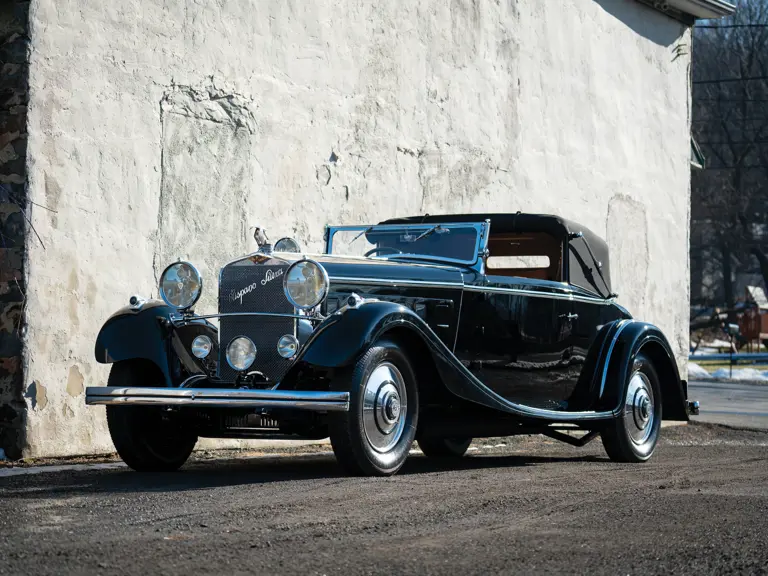

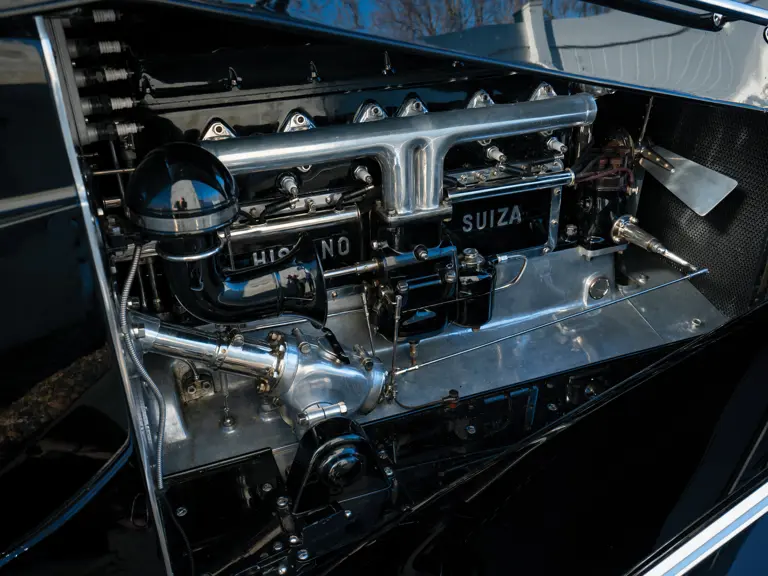
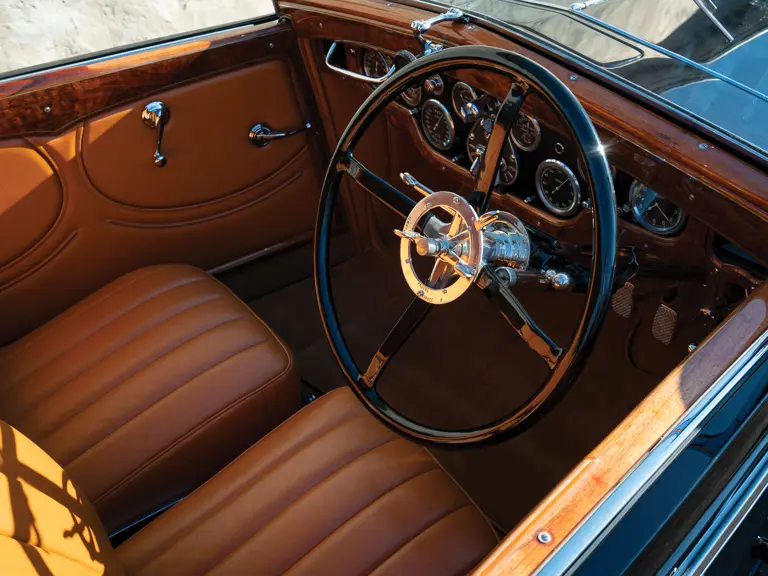
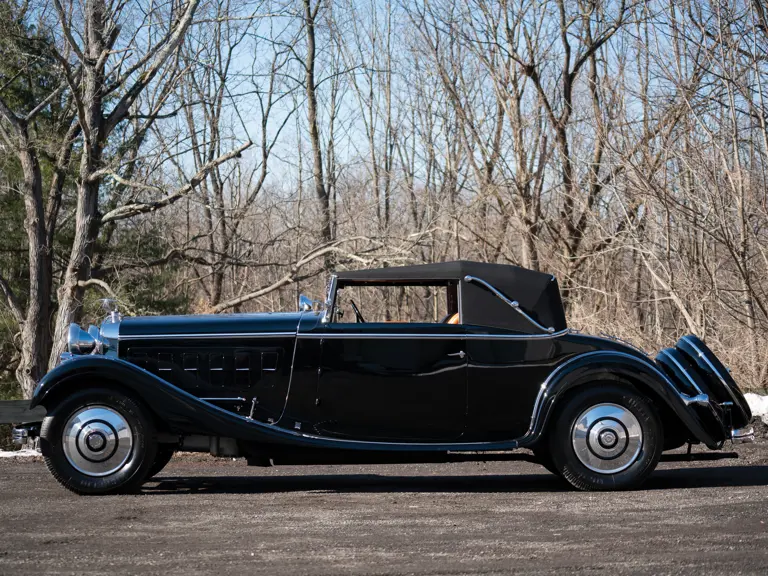

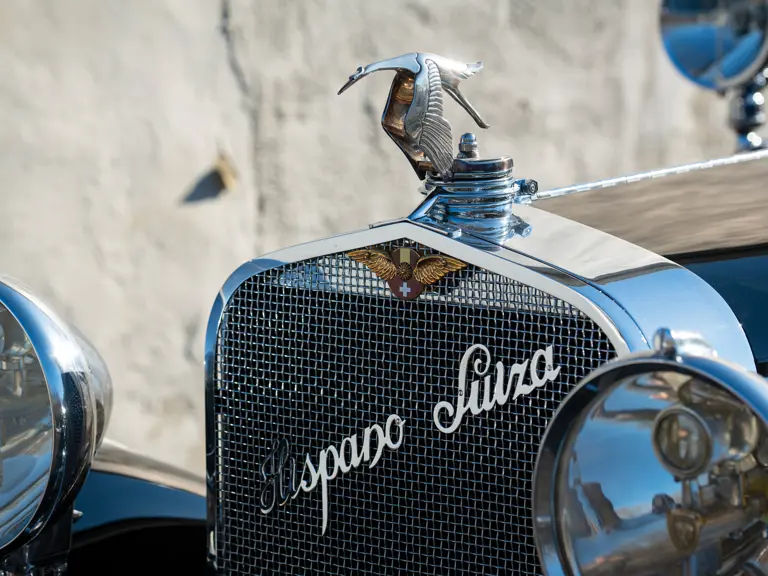

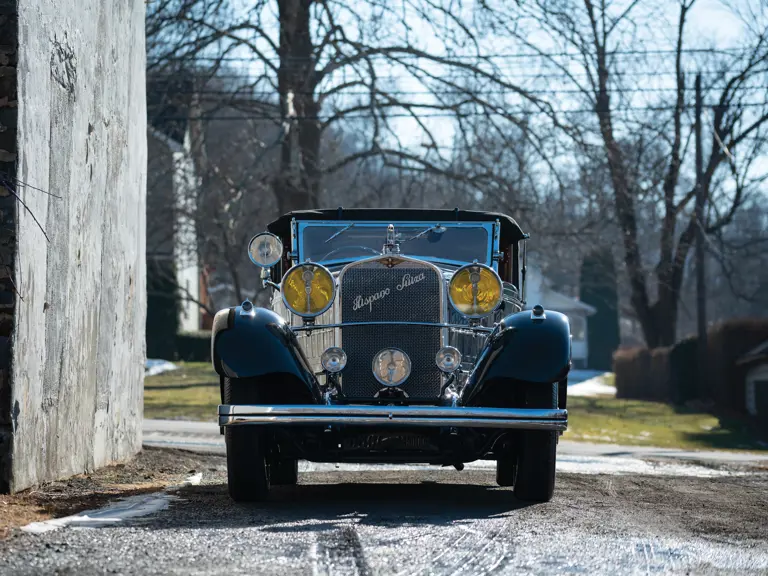
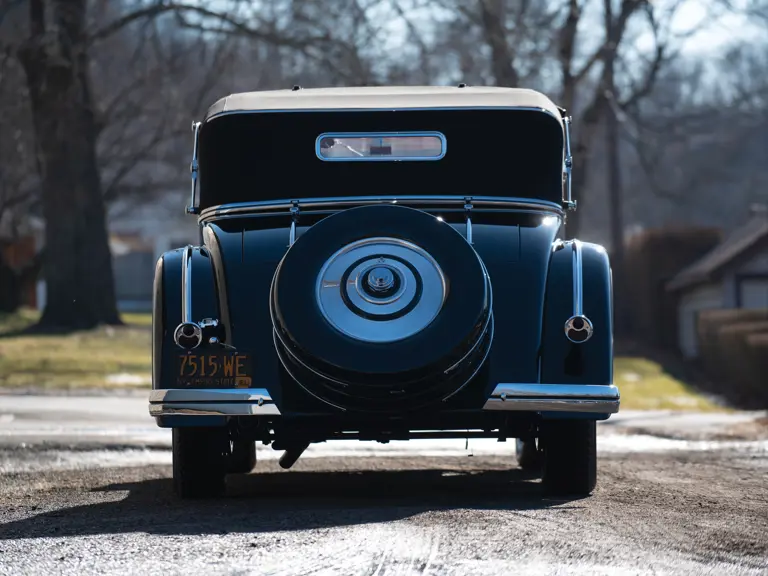
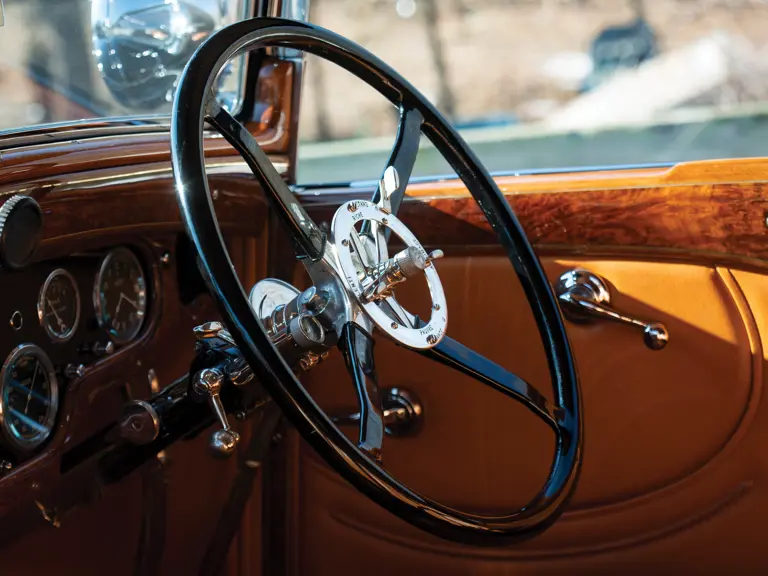
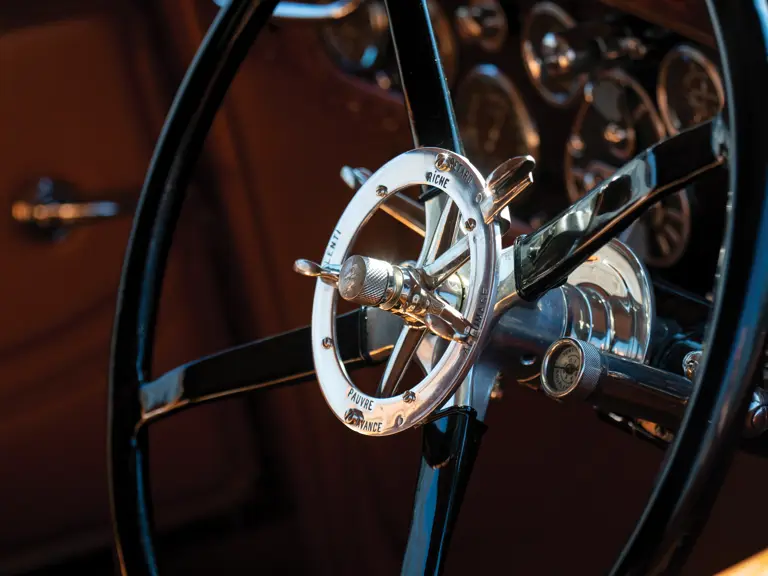

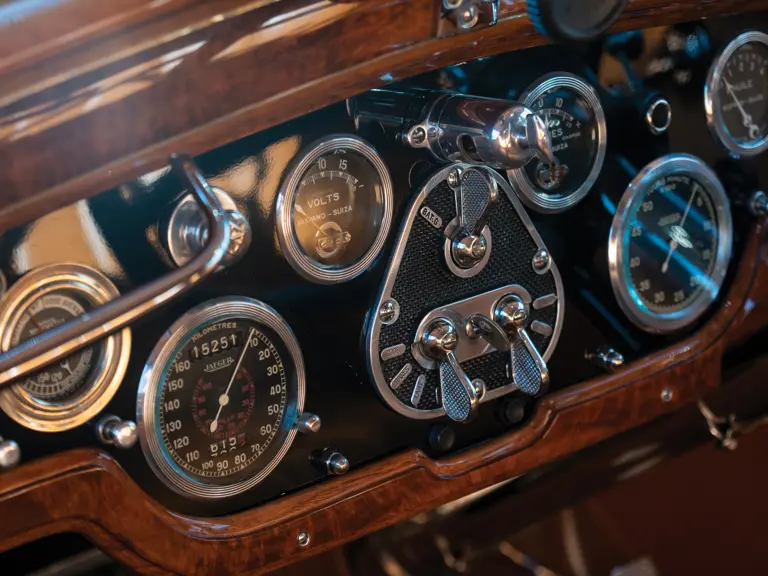
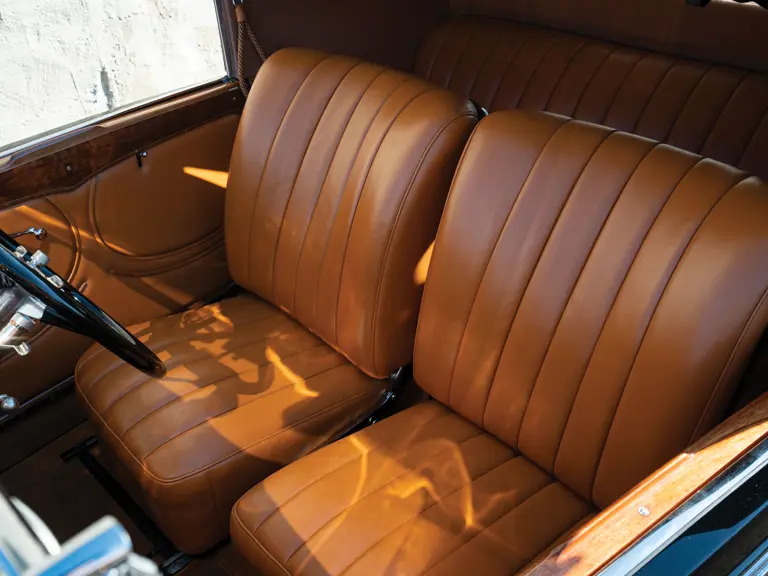

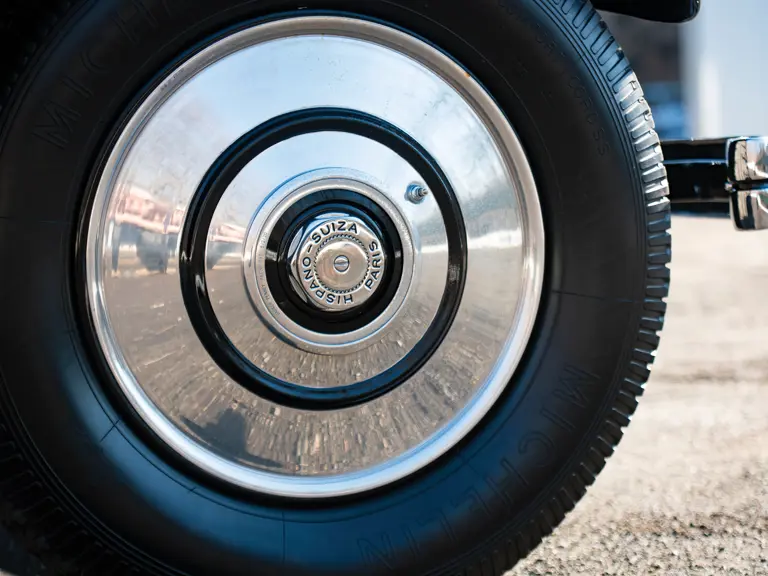
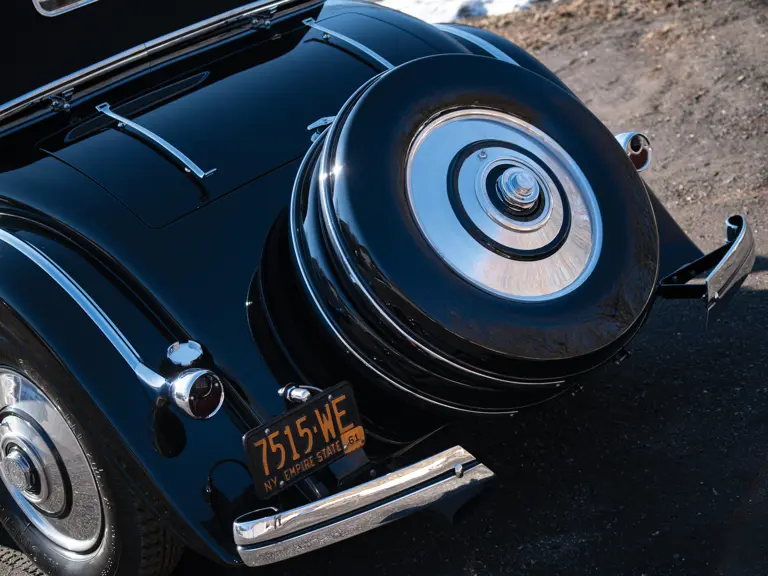
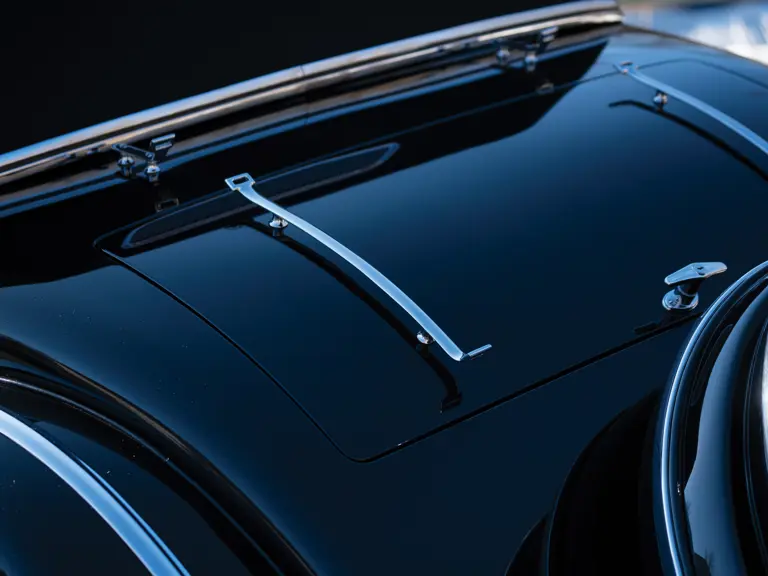
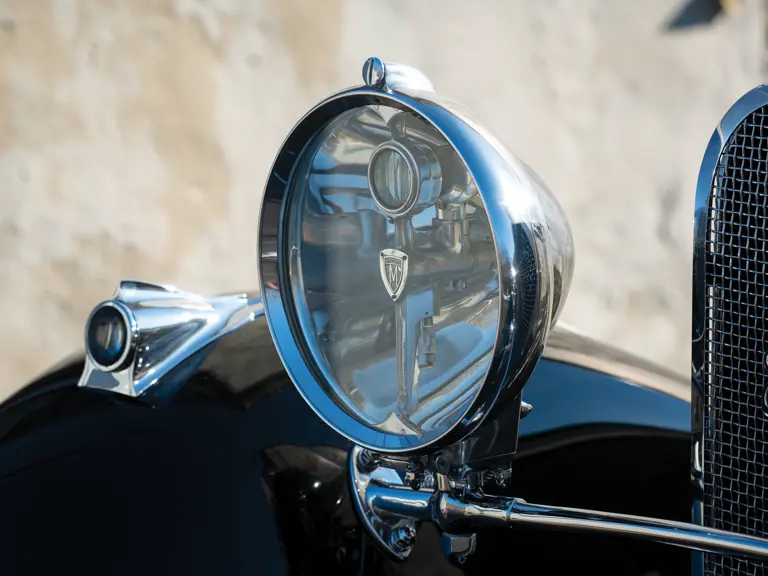
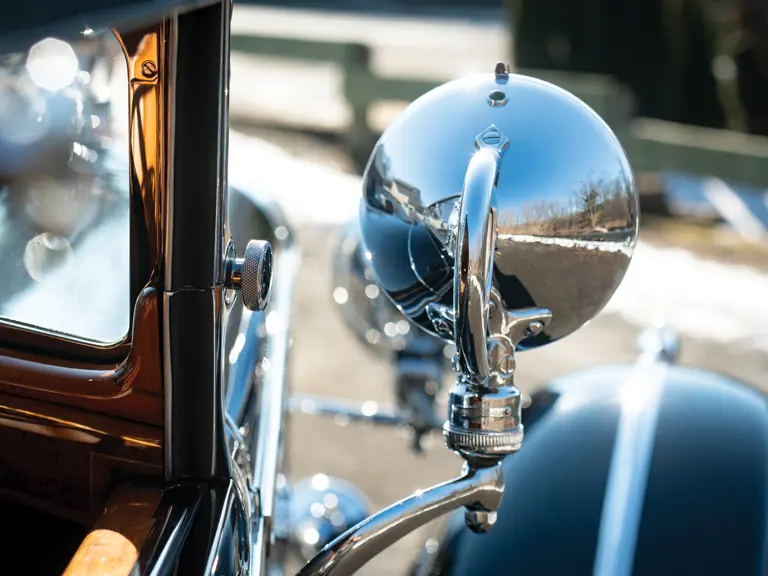
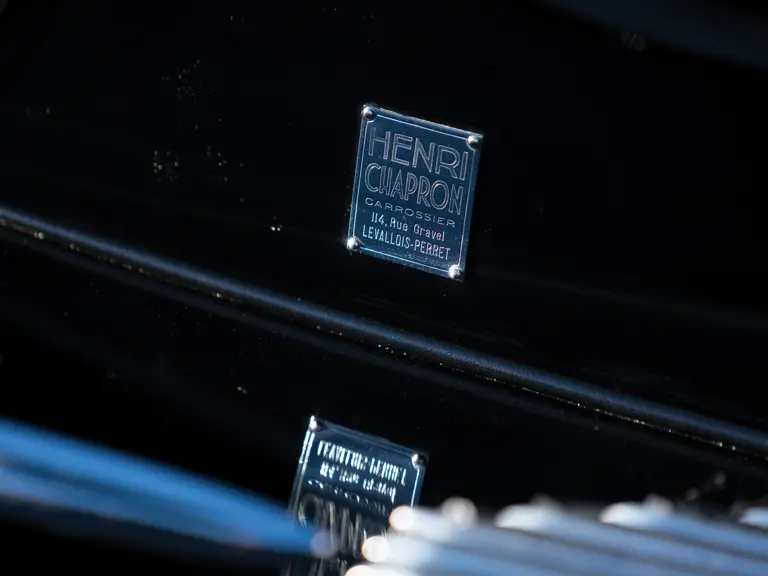
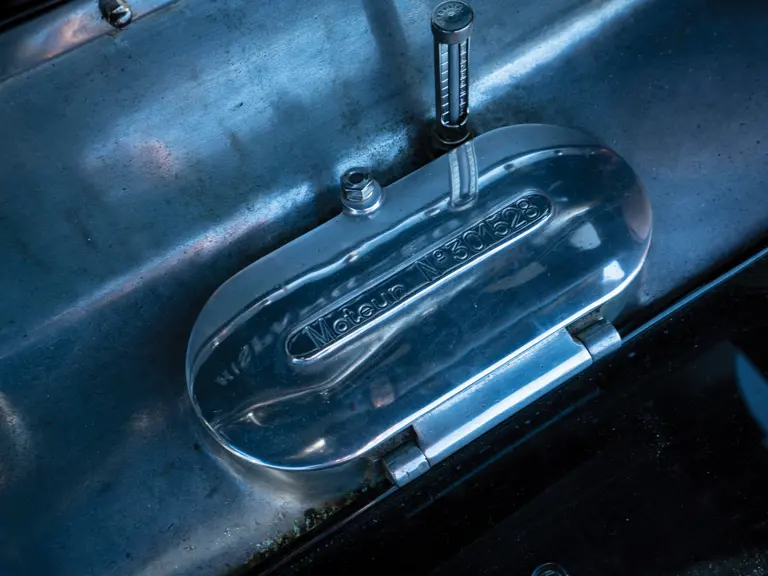

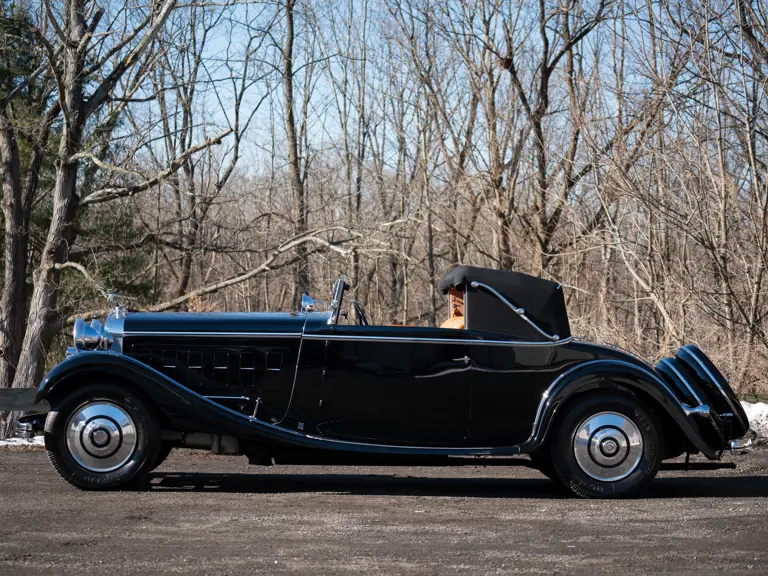

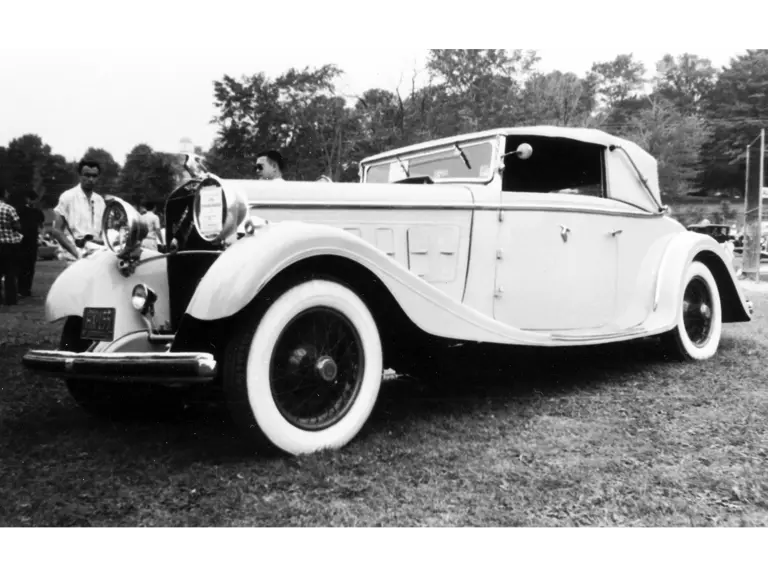

 | Amelia Island, Florida
| Amelia Island, Florida

